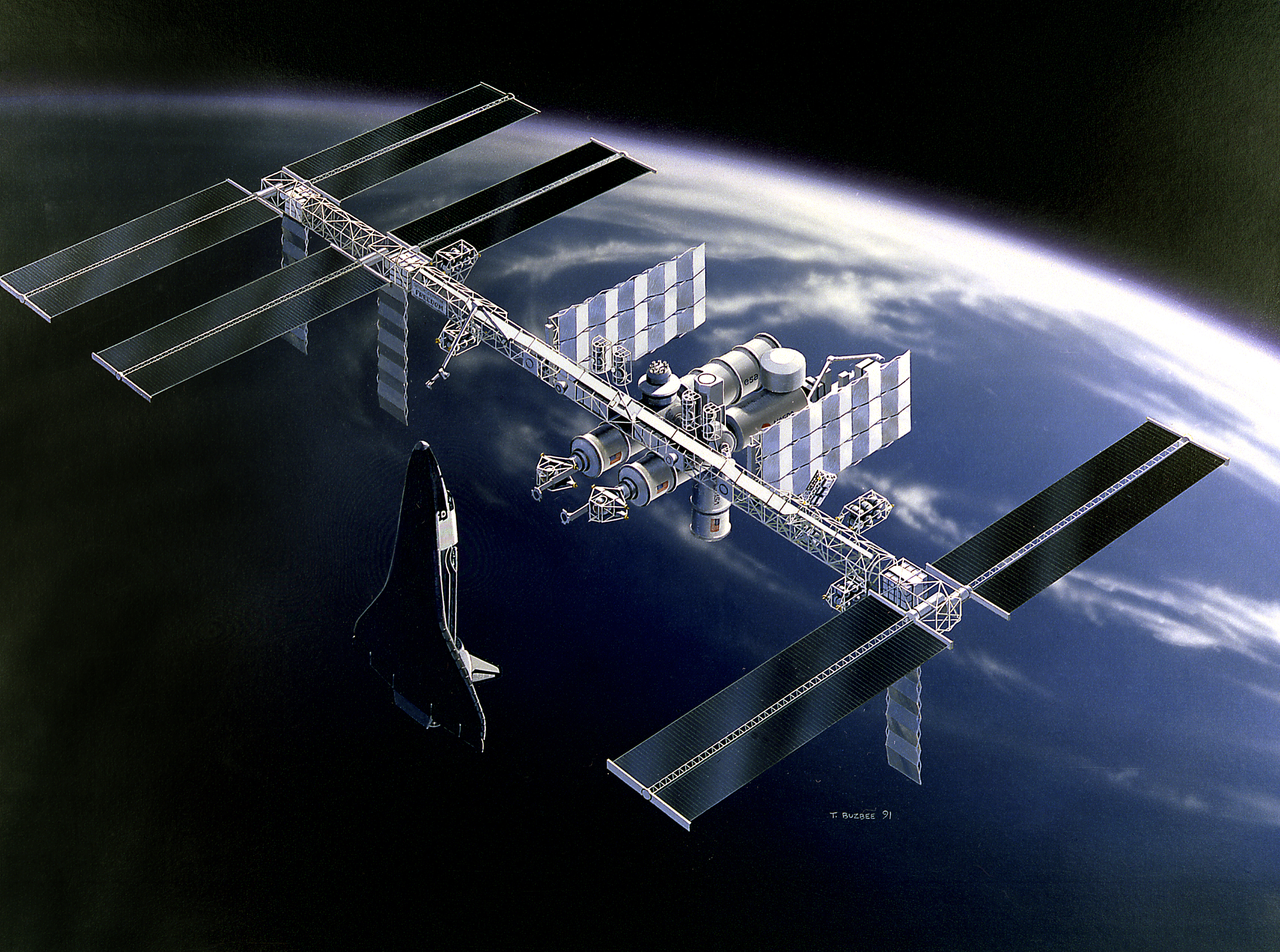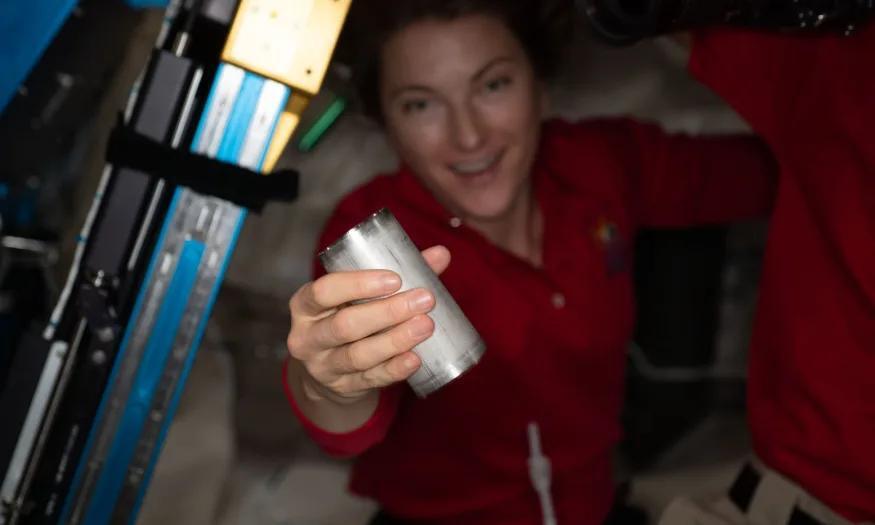
NASA is recycling 98 percent of astronaut pee and sweat on the ISS into drinkable water:
A significant breakthrough has been achieved by astronauts on the International Space Station (ISS) as they have completed a 98% water restoration rate using an advanced system that recycles their urine and sweat into drinkable water. This development is promising for future long interplanetary missions where water availability is crucial.
The success in achieving such high water restoration rates was made possible by utilizing the subsystems integrated into the ISS’s Environment Control and Life Support Systems (ECLSS). The ECLSS is designed to recycle essential consumables like food, air, and water for reuse in the space environment. In particular, water recovery is a critical aspect of life support systems as it allows crew members to sustain their daily needs.

According to NASA, life-support systems’ ideal goal is to recover approximately 98% of the water crew members brought along at the beginning of a long journey. This is because each crew member on the ISS requires roughly a gallon of water per day for drinking, food preparation, and personal hygiene. The recent demonstration of the ISS’s ECLSS showcased its capability to achieve this significant objective of water recovery.
The advanced system implemented on the ISS effectively recycles the astronauts’ urine and sweat, transforming it into safe and drinkable water. By employing cutting-edge technology and sophisticated filtration processes, the system removes impurities and contaminants, ensuring the water meets the necessary quality standards for consumption.
The implications of this breakthrough are tremendous, especially for future deep space missions where access to water sources is limited or non-existent. By maximizing water recovery rates, astronauts can significantly reduce their dependence on external resupply missions and carry a smaller initial water supply. This opens up possibilities for longer-duration missions and enhances overall mission sustainability.
Furthermore, the success of the ISS’s ECLSS in achieving such high water restoration rates highlights the advancements and reliability of life support systems in space. The continuous innovation and improvement of these systems ensure the well-being and safety of astronauts during their missions, even in challenging and resource-constrained environments.
As space agencies and organizations like NASA continue to explore the frontiers of space travel, breakthroughs like this pave the way for future endeavours. Recycling and sustaining vital resources such as water is a critical factor in enabling long-duration space missions, including crewed missions to the Moon, Mars, and beyond.
The remarkable achievement of a 98% water restoration rate on the ISS showcases the ingenuity and capability of human space exploration and contributes to our understanding of sustainable resource management both in space and on Earth. The knowledge and technologies gained from these endeavours can have significant applications and benefits for terrestrial water conservation and purification efforts, further extending the impact of space exploration to benefit life on our home planet.
The “Urine Processor Assembly” is an important subsystem within the ECLSS that plays a crucial role in the water recycling process on the International Space Station (ISS). This subsystem recovers water from urine using vacuum distillation, producing clean water and a concentrated urine brine.
Previously, the ISS was able to recycle about 93 to 94 per cent of the water astronauts brought aboard. However, with the introduction of a new device that extracts the remaining water from the urine brine, NASA observed a significant improvement in the water recovery rate, achieving a 98 per cent recovery rate. This development is essential as it enables higher sustainability and resource conservation during long-duration space missions, especially for future interplanetary missions with limited access to water sources.
By maximizing water recycling capabilities through advanced technologies like the Urine Processor Assembly, space agencies like NASA can reduce the dependence on resupply missions for essential resources and ensure a more self-sufficient environment for astronauts during their missions in space.
NASA’s Christopher Brown, a member of the International Space Station’s life support systems management team, emphasized the significance of the achievement in advancing life support systems. He explained that with the new water recovery system in place, a majority of the water, approximately 98 per cent, can be continuously recycled within the station. Even though a small percentage is lost, the remaining water keeps circulating in the system, contributing to sustainability and resource conservation.
Brown further emphasized the importance of maintaining the efficient operation of the water recycling system, comparing it to collecting 100 pounds of water at the station. With only two pounds lost, the remaining 98 per cent is continuously reused, demonstrating a remarkable achievement in ensuring a sustainable and self-sufficient environment for astronauts.
This accomplishment represents a significant step forward in the evolution of life support systems, as it enables the continuous recycling and utilization of water resources, reducing the need for constant resupply missions and enhancing the long-term sustainability of human space exploration.
Jill Williamson, NASA’s ECLSS water subsystems manager, reassured that the water recycling process in space is fundamentally similar to water distribution systems on Earth, albeit adapted for microgravity conditions. She clarified that astronauts on the International Space Station are not directly consuming urine but are drinking water that has undergone a rigorous reclamation, filtration, and purification process. In fact, the reclaimed water in space is cleaner and purer than the water typically consumed on Earth.

Developing advanced systems like the ECLSS is crucial as NASA embarks on more ambitious missions beyond Earth’s orbit. By recycling and reusing water resources, the agency can significantly reduce the amount of water and oxygen that needs to be transported from Earth. This allows for more scientific equipment and supplies to be carried onboard the spacecraft, expanding the possibilities for conducting research and experiments in space.

Reliable and robust regenerative systems, such as the ECLSS, alleviate concerns about the availability of vital resources like water and oxygen for the crew. With these systems in place, astronauts can focus on the primary objectives of their missions, undistracted by concerns about resource limitations. This ensures that the crew can fully dedicate themselves to their space missions’ scientific exploration and goals.




